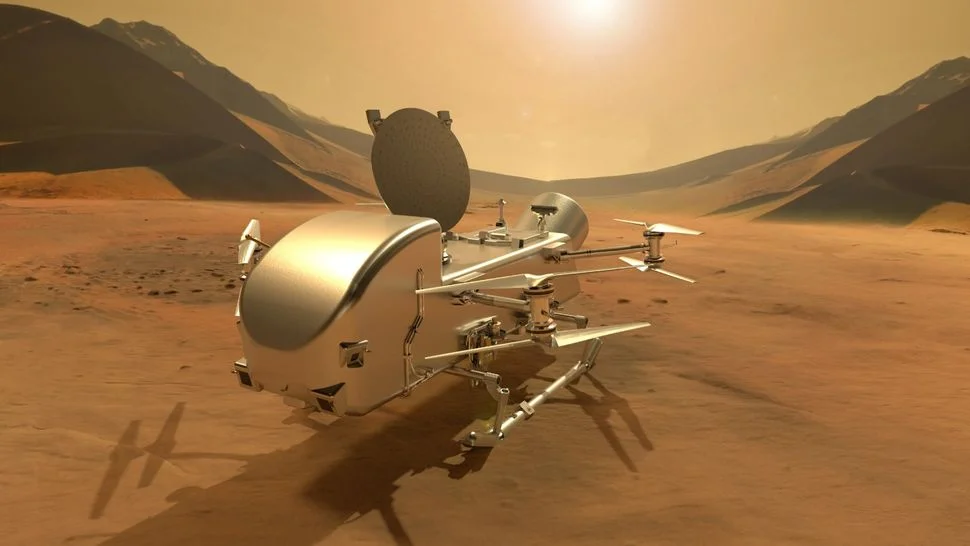NASA’s Dragonfly rotorcraft, a nuclear-powered, car-sized unmanned aerial vehicle that will search for potential precursors to life on Saturn’s moon Titan, is currently undergoing testing. But before Dragonfly can take to the skies, NASA needs to make sure it can withstand the moon’s unique environment.
Dragonfly’s main goal is to study the complex chemistry on Titan that could shed light on the origins of life in our solar system. Equipped with cameras, sensors and samplers, it will explore areas of Titan known to contain organic matter, particularly areas where such material may have come into contact with liquid water beneath the Moon’s icy surface in the past.
The lander will traverse Titan’s nitrogen-rich atmosphere with four twin coaxial rotors, but the Dragonfly team conducted numerous tests to make sure these rotors could operate in such conditions, including a study of the drone’s rotors at the NASA Langley Research Center in Hampton, Virginia. . in a wind tunnel that can simulate atmospheric conditions on Saturn’s largest moon.
“All of these tests were factored into the Dragonfly Titan performance simulations and predictions,” Ken Hibbard, Dragonfly mission systems engineer at the Johns Hopkins Applied Physics Laboratory (APL), said in a NASA statement.
Four Dragonfly test campaigns were carried out: two in the 14 x 22 meter subsonic tunnel and two more in the 16 meter Transonic Dynamic Tunnel (TDT). The subsonic tunnel is used to test fluid dynamics models developed by mission scientists, while the TDT’s variable-density heavy gas capacity is used to test computer models of simulated atmospheric conditions Dragonfly is likely to encounter on Titan.
Bernadine Giuliano, APL’s project test manager, said the latest testing, conducted in June, involved the submodel Dragonfly with hundreds of test runs.
“We tested the conditions in the expected flight area at various wind speeds, rotor speeds and flight angles to evaluate the aerodynamic performance of the vehicle,” Giuliano said. “We conducted more than 700 studies in total, covering more than 4,000 individual data points. “All test objectives were successfully achieved and the data will help increase confidence in our simulation models on Earth before predicting Titan conditions.”
Analyzing this massive amount of data requires a collaborative effort involving experts from institutions ranging from the University of Central Florida to NASA’s Ames Research Center in Silicon Valley. APL’s Rick Heisler, who led the TDT test campaigns, emphasized the value of these tests in understanding the performance of the Dragonfly rotor in Titan’s unique atmosphere.
“The heavy gas environment in TDT has three and a half times the density of air when operating at ambient pressure and sea level temperature,” Heisler said. “This allows the rotors to operate in conditions close to Titan and better reproduce the lift and dynamic load that a real lander would experience.”
As the pieces of the mission come together, the magnitude and historical nature of the mission comes into focus for the team.
“With Dragonfly, we are turning science fiction into research reality,” said Gibbard. “The mission is coming together piece by piece, and we look forward to the next step in sending this revolutionary rotorcraft into the skies and onto the surface of Titan.” Source













